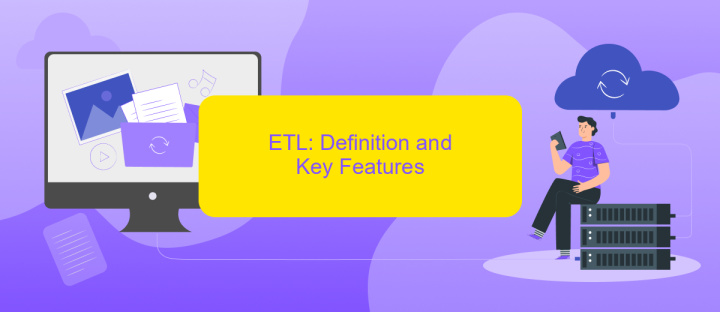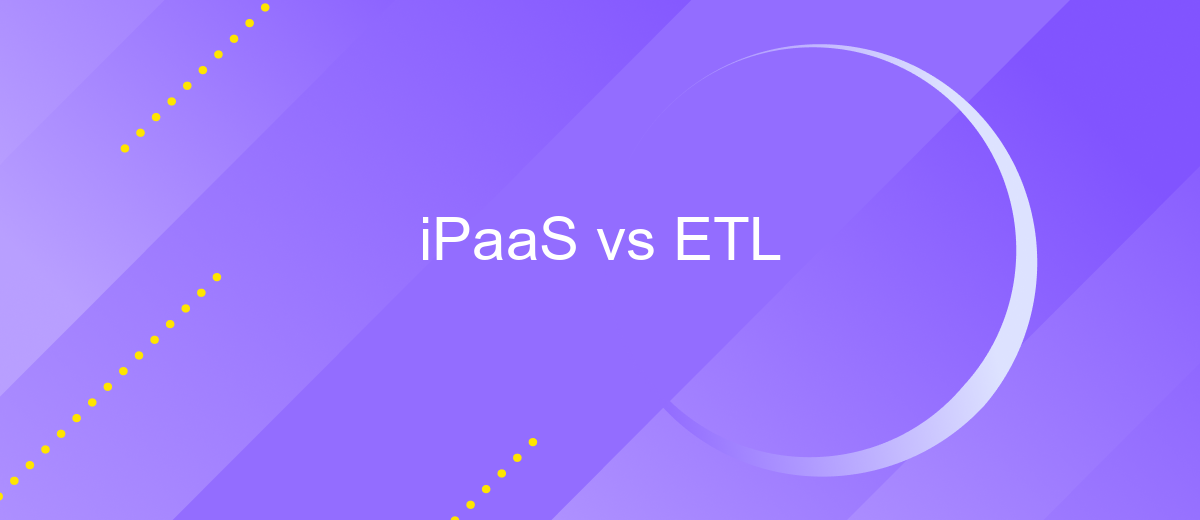iPaaS vs ETL
In today's data-driven world, integrating and managing data efficiently is crucial for businesses. Two popular solutions are Integration Platform as a Service (iPaaS) and Extract, Transform, Load (ETL) tools. While both aim to streamline data processes, they serve different purposes and offer distinct advantages. This article explores the key differences, benefits, and use cases of iPaaS and ETL to help you make an informed decision.
Introduction
In today's rapidly evolving digital landscape, businesses are increasingly relying on data integration solutions to streamline their operations and drive growth. Two popular approaches in this domain are Integration Platform as a Service (iPaaS) and Extract, Transform, Load (ETL). Both offer unique benefits and cater to different integration needs, making it crucial for organizations to understand their distinctions and choose the right tool for their specific requirements.
- iPaaS: A cloud-based platform that facilitates seamless integration of various applications and services.
- ETL: A data processing approach that extracts data from various sources, transforms it into a suitable format, and loads it into a target database.
- ApiX-Drive: A versatile iPaaS solution that simplifies the integration process by offering pre-built connectors and an intuitive interface.
While ETL has been a traditional choice for data integration, iPaaS solutions like ApiX-Drive are gaining popularity due to their flexibility and ease of use. By leveraging the strengths of these platforms, businesses can achieve efficient data management and integration, ultimately leading to better decision-making and improved operational efficiency.
iPaaS: Definition and Key Features

Integration Platform as a Service (iPaaS) is a cloud-based solution designed to facilitate the integration of various applications and data sources. Unlike traditional integration methods, iPaaS offers a more streamlined and scalable approach, enabling businesses to connect disparate systems effortlessly. This platform provides a unified environment where users can design, deploy, and manage integrations without the need for extensive coding or specialized skills. It supports real-time data synchronization, ensuring that information flows seamlessly between different applications and services.
Key features of iPaaS include pre-built connectors, drag-and-drop interfaces, and robust monitoring tools. These elements simplify the integration process, making it accessible even to non-technical users. For instance, services like ApiX-Drive offer a user-friendly interface that allows businesses to set up integrations quickly and efficiently. Additionally, iPaaS platforms often come with advanced security measures, ensuring data integrity and compliance with industry standards. Overall, iPaaS empowers organizations to enhance their operational efficiency by automating workflows and enabling seamless data exchange.
ETL: Definition and Key Features

ETL, which stands for Extract, Transform, Load, is a data integration process used to blend data from multiple sources into a single, unified view. This method is essential for data warehousing and analytics, allowing businesses to make informed decisions based on comprehensive data sets.
- Extraction: This phase involves extracting data from various sources, such as databases, APIs, and flat files.
- Transformation: During this stage, the extracted data is cleaned, transformed, and formatted to meet the required standards and business rules.
- Loading: Finally, the transformed data is loaded into a target database, data warehouse, or another storage system for analysis and reporting.
ETL processes are critical for ensuring data accuracy and consistency across different systems. Tools like ApiX-Drive can simplify the integration process by automating data extraction and transformation, making it easier for businesses to manage their data workflows effectively.
Comparison of iPaaS and ETL

When comparing iPaaS (Integration Platform as a Service) and ETL (Extract, Transform, Load), it's essential to understand their core functionalities. iPaaS provides a platform for integrating various applications and services, facilitating seamless data flow and process automation. On the other hand, ETL focuses primarily on data extraction, transformation, and loading into a data warehouse or other storage solutions.
iPaaS solutions like ApiX-Drive enable businesses to set up integrations quickly without extensive coding, making it easier for non-technical users to connect different systems. ETL processes, however, often require more technical expertise and are typically used for large-scale data processing and analytics.
- Flexibility: iPaaS offers more flexibility with real-time data integration, while ETL is more suitable for batch processing.
- User-friendliness: iPaaS platforms like ApiX-Drive are designed for ease of use, whereas ETL tools may require specialized knowledge.
- Scalability: Both can scale, but iPaaS solutions are often more agile in adapting to changing business needs.
Ultimately, the choice between iPaaS and ETL depends on your specific requirements. If you need real-time integration and user-friendly setup, iPaaS might be the better option. For complex, large-scale data transformations, ETL remains a robust choice.
Conclusion
In conclusion, both iPaaS and ETL offer robust solutions for data integration, each catering to different needs and use cases. iPaaS excels in providing seamless, real-time integrations across various platforms, making it ideal for businesses looking to streamline their workflows and enhance connectivity. On the other hand, ETL remains a powerful tool for handling large volumes of data, especially when complex transformations and data warehousing are required.
When choosing between iPaaS and ETL, it's crucial to consider the specific requirements of your organization. For instance, services like ApiX-Drive can simplify the integration process, offering a user-friendly interface and a wide range of connectors to automate workflows efficiently. Ultimately, the right choice will depend on your business goals, existing infrastructure, and the level of data complexity you need to manage. By carefully evaluating these factors, you can select the most suitable solution to drive your data strategy forward.
FAQ
What is the primary difference between iPaaS and ETL?
When should I use iPaaS over ETL?
Can iPaaS replace ETL tools?
What are the advantages of using iPaaS?
How can I get started with iPaaS for my business?
Time is the most valuable resource for business today. Almost half of it is wasted on routine tasks. Your employees are constantly forced to perform monotonous tasks that are difficult to classify as important and specialized. You can leave everything as it is by hiring additional employees, or you can automate most of the business processes using the ApiX-Drive online connector to get rid of unnecessary time and money expenses once and for all. The choice is yours!

